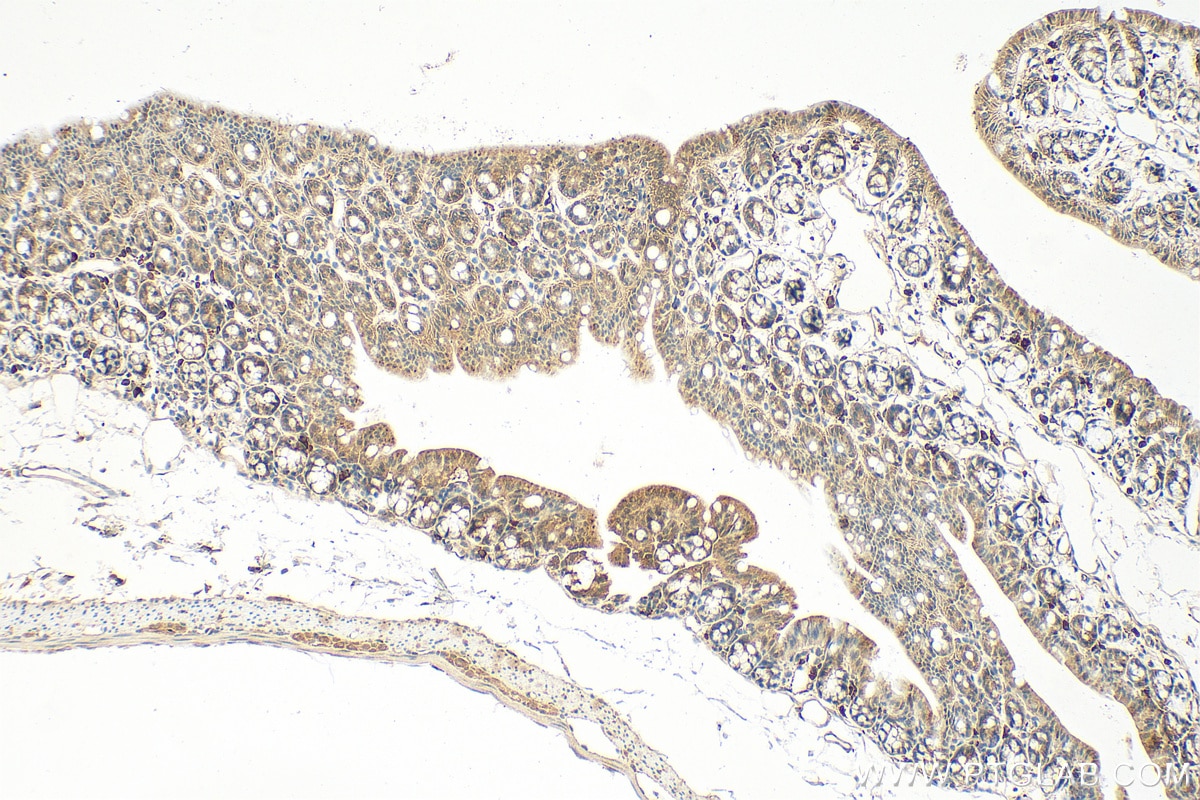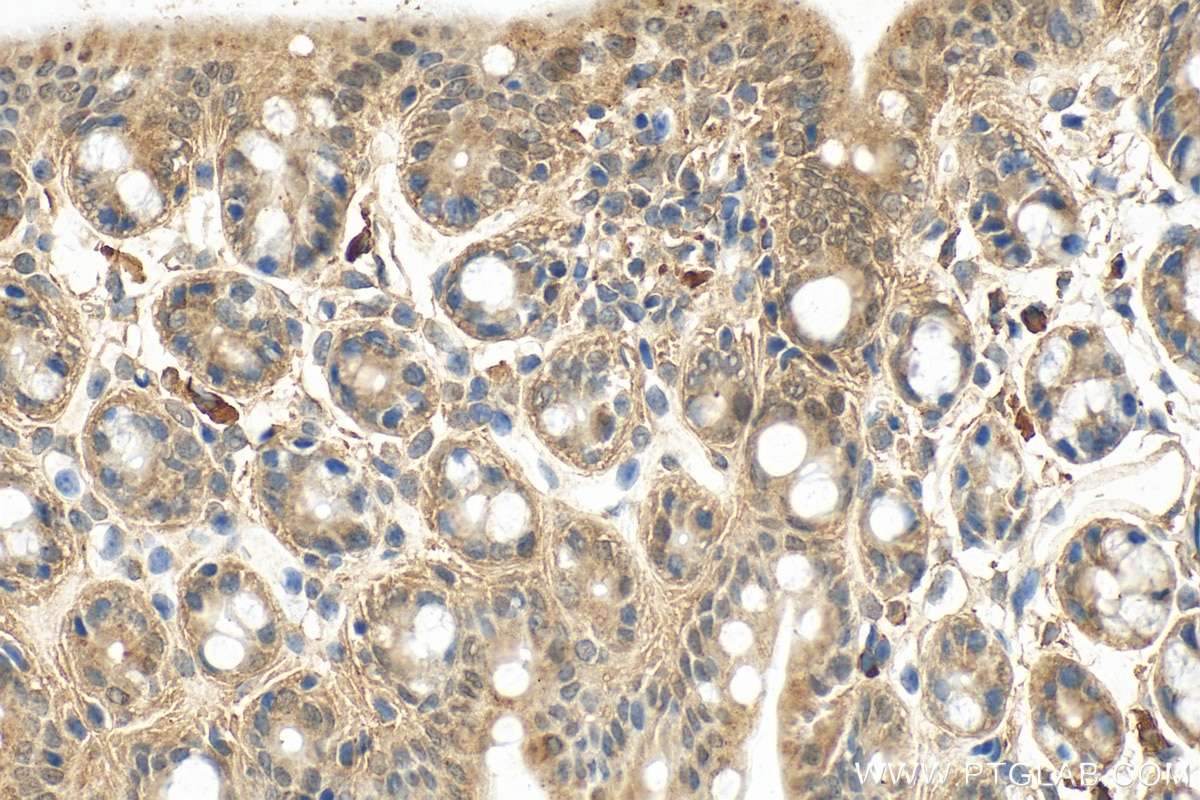Product Information
27875-1-PBS targets EGLN3 in WB, IHC, Indirect ELISA applications and shows reactivity with human, mouse samples.
| Tested Reactivity | human, mouse |
| Host / Isotype | Rabbit / IgG |
| Class | Polyclonal |
| Type | Antibody |
| Immunogen |
CatNo: Ag27464 Product name: Recombinant human EGLN3 protein Source: e coli.-derived, PGEX-4T Tag: GST Domain: 1-115 aa of BC010992 Sequence: MPLGHIMRLDLEKIALEYIVPCLHEVGFCYLDNFLGEVVGDCVLERVKQLHCTGALRDGQLAGPRAGVSKRHLRGDQITWIGGNEEGCEAISFLLSLIDRLVLYCGSRLGKYYVK Predict reactive species |
| Full Name | egl nine homolog 3 (C. elegans) |
| Calculated Molecular Weight | 27 kDa |
| Observed Molecular Weight | 27 kDa |
| GenBank Accession Number | BC010992 |
| Gene Symbol | EGLN3 |
| Gene ID (NCBI) | 112399 |
| Conjugate | Unconjugated |
| Form | Liquid |
| Purification Method | Antigen affinity purification |
| UNIPROT ID | Q9H6Z9 |
| Storage Buffer | PBS only, pH 7.3. |
| Storage Conditions | Store at -80°C. |
Background Information
EGLN3, also named as HPH-1, HIF-PH3, HPH-3 and PHD3, is a cellular oxygen sensor that catalyzes, under normoxic conditions, the post-translational formation of 4-hydroxyproline in hypoxia-inducible factor (HIF) alpha proteins. It hydroxylates a specific proline found in each of the oxygen-dependent degradation (ODD) domains (N-terminal, NODD, and C-terminal, CODD) of HIF1A. It is a regulator of cardiomyocyte and neuronal apoptosis. EGLN3 can be a prognostic marker for gastric cancer.








